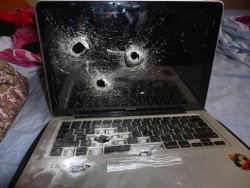If you’re looking for a quality, affordable laptop for you or a loved one, especially those in high school or college, it might be worth your time to consider a netbook. Acer and Samsung have two new options coming out in time for the holidays; the former designed to be affordable, and the other slightly less so. The caveat? They’re both Chromebooks, a further subcategory down the chain. So, what’s the difference between a laptop, a netbook, and a Chromebook?

A netbook is a small, lightweight laptop, usually with unimpressive hardware and designed to be an inexpensive way to get online on-the-go. This accessibility has seen the category explode in popularity, competing steadily with full-size laptops. It doesn’t hurt that several of the top laptop producers are also selling a lot of netbooks themselves; all they have to do is scale down the tech. Netbooks aren’t without their downsides, however. One of the biggest issues is the Windows operating system. Windows is a full-feature software suite that takes a good while to load and boot up, especially in a device using lightweight, affordable parts. There was no alternative; Apple’s MacOS is proprietary and they had (and have) no plans to enter the netbook space. It was Windows or bust…for a while.
Google partnered with Samsung and Acer in 2011 to create a new category: the Chromebook, a netbook running an extremely light and fast operating system developed in-house by Google. A Chromebook has very little in the way of storage, only a few gigs or so, which isn’t an issue since its memory is integrated with a Google Drive cloud server. Although capable of only running so-called “Chrome apps,” which are really just websites, the Chromebook proved to be popular among students, with more Chromebooks being sold than Apple Macbooks in the first quarter of 2016. I used an early model myself while in college. While unable to use iTunes, Photoshop, or any other program that can’t be run in-browser, I had a $200 laptop with long battery life, a decent screen, and could fit in a backpack. Four years later, and I’m using it to type this article. One of the perks of a cloud-based computer is that the hard drive doesn’t get full and slow it down, so it’s just as fast as the day I bought it (my Chromebookversary!).
Now, Samsung and Acer are still in the game and releasing two great devices. Acer’s newest Chromebook 15 (bearing the catchy name of CB3-532-C47C) is a 15.6” beast, perfect for watching streaming video. And you better be comfortable with streaming, because there’s only 16GB of storage (plus 100GB on Google Drive and an SD card slot for expansion). The resolution, set at 1366 x 768 (about that of an 11” screen), combined with 2GB of RAM makes multitasking roughly at the same level of a laptop that size. Still, it’s good-looking (backlit LED keyboard!) and features a 12-hour battery, all for $199. For a student who just wants to study, browse the internet, and watch Netflix, that can’t be beat.

If you’ve been extra good this year, or for a Google fanatic in your family, give the $499 Samsung Chromebook Pro a look. While running the same OS as the Acer, the Samsung has a hexacore 2GHz processor and 4GB of RAM under the hood for faster, more fluid browsing with greater multitasking. The screen is a little smaller (reported to be around 12.2”) but is much sharper. The screen has touch capability and folds all the way back, so the keyboard half can be used as a stand. A version of the S-Pen, popular on Samsung’s Note smartphones, is included. Also noteworthy: the gorgeous, slim, all-aluminum design and 32GB of internal storage, adding up to the higher price point.

Both Chromebooks will be among the first in the line to be compatible with Android apps (making the Samsung’s stylus all the more important) which will bring their functionality closer to that of a regular laptop. The Acer is available now at Wal-Mart, and the Samsung is currently on pre-order but should be released soon. Might be a little bit early to think about holiday gifts, but a Chromebook makes a great one for students. And, of course, iFixYouri is here to do any repairs needed during its lifetime.
















